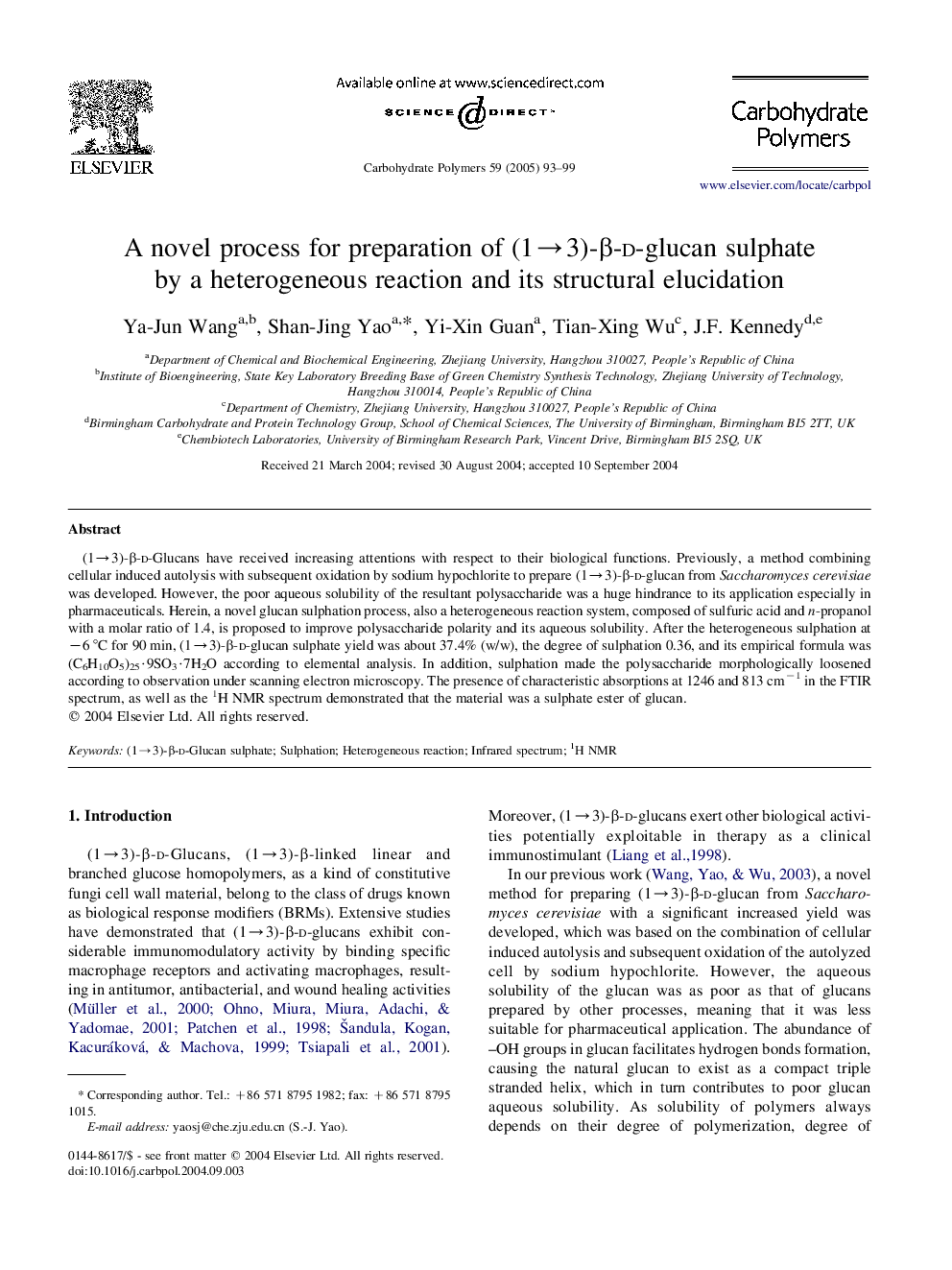| Article ID | Journal | Published Year | Pages | File Type |
|---|---|---|---|---|
| 10603531 | Carbohydrate Polymers | 2005 | 7 Pages |
Abstract
(1â3)-β-d-Glucans have received increasing attentions with respect to their biological functions. Previously, a method combining cellular induced autolysis with subsequent oxidation by sodium hypochlorite to prepare (1â3)-β-d-glucan from Saccharomyces cerevisiae was developed. However, the poor aqueous solubility of the resultant polysaccharide was a huge hindrance to its application especially in pharmaceuticals. Herein, a novel glucan sulphation process, also a heterogeneous reaction system, composed of sulfuric acid and n-propanol with a molar ratio of 1.4, is proposed to improve polysaccharide polarity and its aqueous solubility. After the heterogeneous sulphation at â6 °C for 90 min, (1â3)-β-d-glucan sulphate yield was about 37.4% (w/w), the degree of sulphation 0.36, and its empirical formula was (C6H10O5)25·9SO3·7H2O according to elemental analysis. In addition, sulphation made the polysaccharide morphologically loosened according to observation under scanning electron microscopy. The presence of characteristic absorptions at 1246 and 813 cmâ1 in the FTIR spectrum, as well as the 1H NMR spectrum demonstrated that the material was a sulphate ester of glucan.
Related Topics
Physical Sciences and Engineering
Chemistry
Organic Chemistry
Authors
Ya-Jun Wang, Shan-Jing Yao, Yi-Xin Guan, Tian-Xing Wu, J.F. Kennedy,
